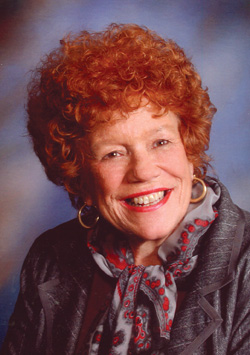
Judge Barbara Haynes
Lecture explores role of spirituality in medicine
Room 208 in Light Hall was filled last Thursday for the annual Chapman Lecture, in honor of the late John Chapman, M.D., former dean of the Vanderbilt University School of Medicine.
“Thank you for coming to honor my friend, my teacher, my dean — John Chapman,” John L. Tarpley, M.D., professor of Surgery told the capacity crowd. “He was a good man, who told us to take our work seriously, but not to take ourselves too seriously.”
The Chapman Lecture has always focused on a particular area of interest to Chapman — the ecology of medical education. John L. Tarpley, M.D., professor of Surgery, presented “The Not So Distant Mirror: Medicine and Spirituality 1885-2004,” a historical survey of the relationship between the science and spirituality in patient care.
Tarpley began by clarifying the definition of “spirituality” he was using — the immaterial, intelligent or sentient part of a person.
“This can be superimposed with religion, touching religion, or completely separate from religion,” he said.
Citing various historical figures and studies, Tarpley also pointed to his own experience of working with severely ill children.
“The child is sick, which is very much a physical problem, but the parents are asking 'why me?' and 'what did I do to deserve this?' and all sorts of other questions, which are clearly spiritual. Clearly both issues are present in medicine,” he said.
Tarpley told how, at the turn of the 20th century, scientific medicine and spiritual medicine butted heads. It was one or the other. Today, Tarpley said, medicine needs to use both spiritual and allopathic treatment.
“The Joint Commission actually requires that medical professionals address the spiritual needs of a patient,” Tarpley said. “That doesn't mean you have to meet those needs, but you must address them.”
He said physicians should be aware of situations that may increase the spiritual needs of a patient, such as a stroke victim who is facing a new way of life, and determine if the patient would like to meet with someone. Then they should contact the appropriate counseling, be it a religious figure or a psychologist, depending on the patient's spirituality.
“The bottom line is this: sit down with patients, eye-to-eye, talk with them, listen, touch them…seize the moment,” Tarpley said.













